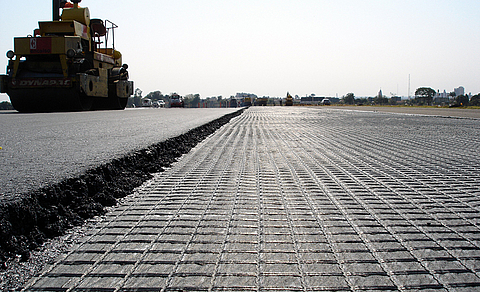Gescher/Germany, January 2021 – A success story that began 50 years ago: HaTelit asphalt reinforcements were first used in road construction in 1971. Today, they top conventional rehabilitation methods in terms of sustainability and cost-effectiveness.
Potholes, cracks and deformations are not only an annoyance for every car or bicycle user, they also pose a great danger to traffic participants in many places. Conventional repair and rehabilitation work is often well-intentioned and appears at first glance to be a quick, cost-effective solution, but in the long term they are not always convincing. Damage, (so-called reflection cracks), quickly become visible again on the road surface and have to be rehabilitated. HaTelit asphalt reinforcements successfully close this gap: thanks to their quick and easy installation, they are not only the more economical and sustainable solution in the short term, but also in the long term. The simple installation and fewer work steps significantly shorten construction times. This also has a positive effect on traffic disruptions during rehabilitation, such as long-distance diversions and traffic jams.
HaTelit asphalt rehabilitations are unbeatable with regards to their long-term durability. Thanks to the special bitumen coating (bitumen content > 65 %) and an optimal mesh size, HaTelit shows a permanently high adhesive bond with the asphalt layers. Studies have shown that even after 15 years of rehabilitation, the road is in a condition equivalent to that of a full reconstruction.
The extended service life, less use of material and transport not only have a positive impact on costs of up to 40%, but also reduce CO2 emissions per rehabilitated lane kilometre by more than 24.3 tonnes.
Today, various types of HaTelit asphalt reinforcement are available for installation on asphalt and concrete surfaces. A particularly sustainable variant is HaTelit C eco, which consists of 100 % PET recycled yarn, but is in no way inferior to the classic HaTelit C in terms of performance and safety.
